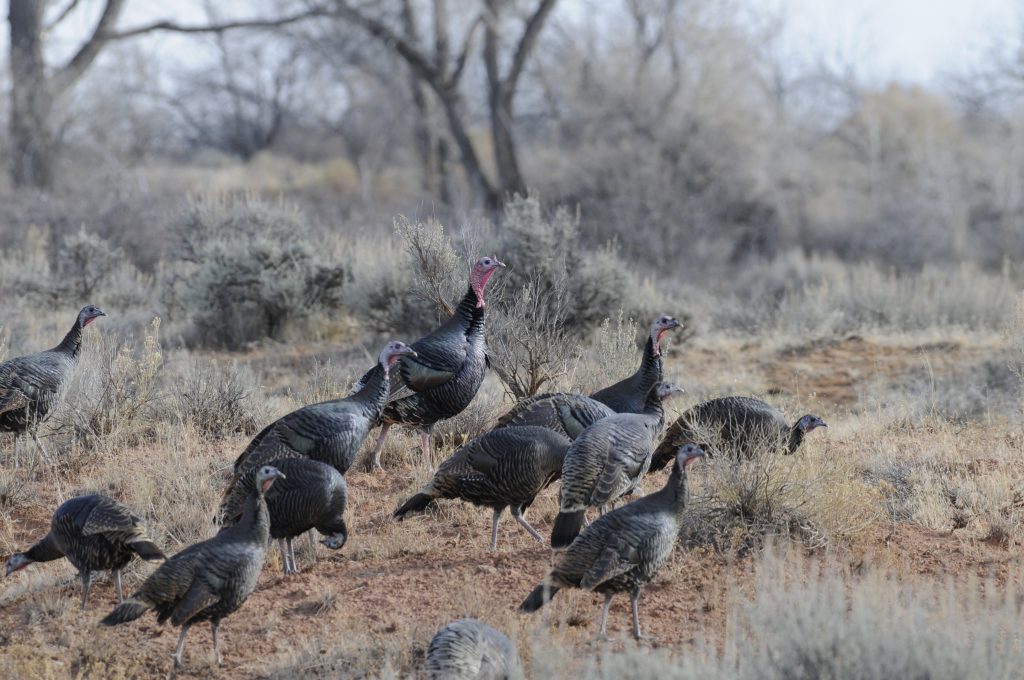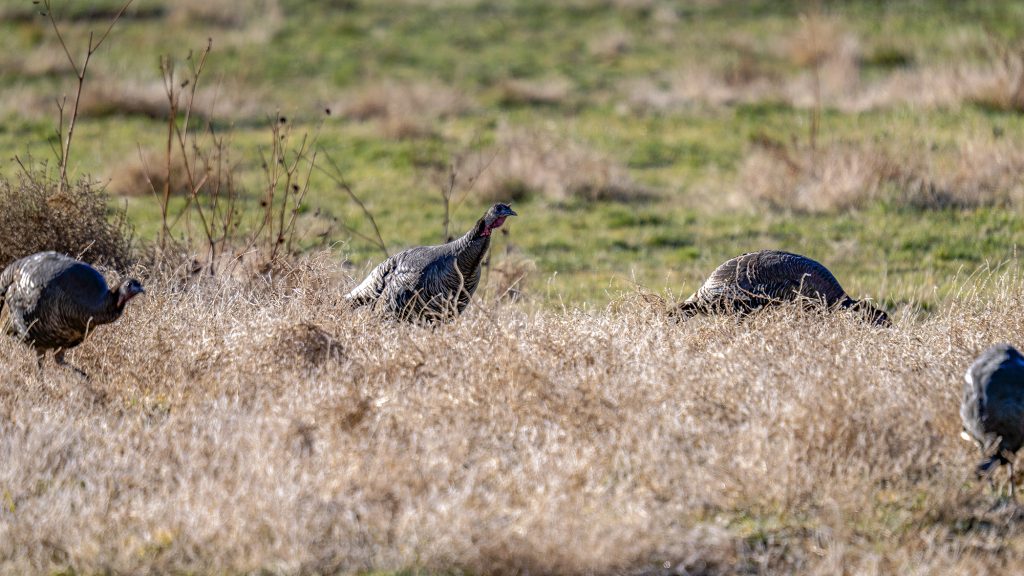ST. GEORGE — Every Thanksgiving, turkeys take center stage. They are the focal point of many Southern Utahns’ dinner tables. But there’s more than one way to enjoy turkey this holiday season.

Southern Utahns can view wild turkeys in lower Cedar Canyon, the town of New Harmony, Best Friends Animal Sanctuary, Zion and Bryce Canyon National Parks, Panguitch Lake and Pine Valley Recreation Area, among others.
There are two wild turkey varieties in Utah — Rio Grande and Merriam’s, said Jason Nicholes, wildlife biologist with the Utah Division of Wildlife Resources. Rio Grande turkeys typically stay near watercourses, like streams, in lower elevations, often near cottonwood, pinyon pine and juniper trees.
Comparatively, Merriam’s tend to range higher on the mountain into ponderosa pine and oak brush habitats, he told St. George News.
The birds are often observed on private property, particularly those near water, as it often contains ideal turkey habitat with larger trees and sometimes crops, Nicholes said, adding that food can be scarcer on public land.

“So they do tie themselves a little bit more to the private land,” he said. “Along with that, there’s also usually fewer predators on private land, just because there’s been an active predator management program on a lot of private land … So it’s all a survival strategy.”
When looking for wild turkeys, the division recommends heading out early and becoming familiar with the area and the birds’ locations. By observing their daily patterns, enthusiasts or hunters can set up in an area where they’ll be active.
During hunting season, most turkeys are harvested between 10 a.m. and 2 p.m., the DWR states.
Turkey watchers should keep their distance and respect the animals. While uncommon, male turkeys, called Toms, can become aggressive, particularly during the spring breeding season. And Nicholes said there have been cases where they’ve attacked cars with their beaks or wings after seeing their reflection.

In the spring, Toms are more likely to be mixed in with groups of hens. In the fall and winter, flocks are more likely to contain hens and young males, called Jakes, with Toms “off by themselves,” Nicholes said. Jakes can be distinguished from hens by their darker breast feathers in contrast to the females’ tan and white-tipped plumage.
Flocks can be seen wandering or scratching the earth during daylight hours in search of food. Despite being ground nesters, at night, they roost in trees, particularly taller specimens over 30 feet high, like ponderosa pines or cottonwood trees. Nicholes said the large birds can fly short distances of 20-30 yards.
While domestic varieties have had the “wildness bred out of them,” thus losing their survival instinct, wild turkeys are intelligent creatures despite their reputation, Nicholes said.

“Anybody that’s spent a little time hunting them will tell you that turkeys are very smart,” he said.
While Utah is home to 25,000-30,000 wild Rio Grande and Merriam’s turkeys, there were no established populations for 100 years or more until the 1950s, according to a DWR news release.
It’s unclear why the species disappeared from the state, but there is evidence that the birds were native before European exploration, Upland Game Coordinator Heather Talley told St. George News.
“There is evidence that turkeys coexisted with Native Americans from artifacts that have been found in Utah,” she said.

Evidence of turkeys on the landscape includes pictographs, petroglyphs, turkey-feather blankets and turkey bones found in areas where Native Americans lived, the release states.
Merriam’s wild turkeys from Arizona and Colorado were reintroduced in Iron, Washington, Kane, Garfield and Grand counties in the 1950s by the division, then called the Utah Department of Fish and Game.
Birds from these populations have since been trapped and released throughout the state, the division states.
In 1989, the division began trapping and transplanting Rio Grande turkeys from Arizona, Colorado, Kansas, Oklahoma, South Dakota, Texas and Wyoming, according to the DWR.

Last year’s harsh winter and record snowfall caused population declines throughout the state as the birds’ movements were impeded, making it difficult for them to find food. The division reports that this is in conjunction with other recent declines caused by drought.
“But biologists anticipate an increase in many areas due to prime brood-rearing conditions this past summer,” the release states.
Turkeys are a “boom-and-bust species,” Nicholes said.
“During drought situations or hard winters, their populations can get down quite a bit,” he explained. “But then, when we have good weather, they can really, really increase quickly.

“A typical clutch for a turkey is probably in the neighborhood of three or four. But on a good year, if predators aren’t having too much of an effect, one hen can have 13-14 eggs and raise a really large clutch of poults (baby turkeys).”
Talley said that Iron and Washington County populations have fared better this year because the increased moisture didn’t impact turkey movement.
High moisture increased the number of fobs — flowering plants — and insects available. Poults eat mostly insects, Talley said.
In the fall and winter, wild turkeys eat mass crops, such as rose hips, chokecherries, acorns and pine nuts, Nicholes said.
Funds spent on hunting and combination licenses could be spent to improve habitat and manage turkeys, Talley said.
Additionally, while it may seem counterintuitive to some, she said the one way to support healthy turkey populations is to not feed them.
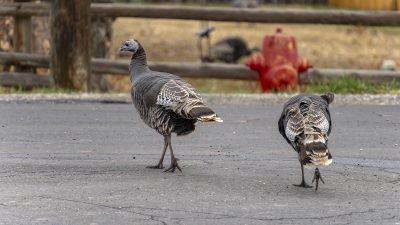
“Feeding turkeys can cause an artificial congregation of birds, which leads to an increase of disease transfer, a disruption of regular migrations, and creates depredation or nuisance issues, which the DWR then needs to address,” Talley said.
Feeding turkeys is also banned in many cities and towns. In some cases, DWR staff may implement the agency’s feeding policy, Talley said.
During harsh winters, turkeys occasionally gather in large flocks where people feed their livestock, which can cause conflict, Nicholes said. In those cases, the division works with the National Wild Turkey Federation to drop food on public land to draw the birds away from private property.
Property owners struggling with turkeys should call their local division office, Talley added.

“The DWR translocates turkeys each year to move them from nuisance/depredation areas to areas with suitable habitat where they don’t cause a conflict,” she said. “Last winter, the DWR translocated 1,265 turkeys.”
Southern Utahns eager to hunt their own turkey for next year’s holiday can begin applying for the 2024 limited-entry spring hunt at 8 a.m. on Dec. 12 online or by calling their local DWR office, the division said in a news release.
Applications must be submitted by 11 p.m. Dec. 27, and drawing results will be released Jan. 10, 2024. The hunt will be held April 13-24, with 450 permits available in Southern Utah.
The general statewide turkey hunts will be held from April 29 to May 31, 2024, and permits will go on sale on March 5.
Photo Gallery
A flock of wild turkeys gather on public land, date and location unspecified | Photo courtesy of the Utah Division of Wildlife Resources, St. George News A wild turkey eats in a field near New Harmony, Utah, Nov. 21, 2023 | Photo by Alysha Lundgren, St. George News Wild turkeys eat in a field near New Harmony, Utah, Nov. 21, 2023 | Photo by Alysha Lundgren, St. George News Wild turkeys cross the road in New Harmony, Utah, Nov. 19, 2023 | Photo by Alysha Lundgren, St. George News A flock of wild turkeys gather on public land, date and location unspecified | Photo courtesy of the Utah Division of Wildlife Resources, St. George News Wild turkeys eat in a field near New Harmony, Utah, Nov. 21, 2023 | Photo by Alysha Lundgren, St. George News Wild turkeys eat in a field near New Harmony, Utah, Nov. 21, 2023 | Photo by Alysha Lundgren, St. George News Wild turkeys cross the road in New Harmony, Utah, Nov. 19, 2023 | Photo by Alysha Lundgren, St. George News A wild turkey eats in a field near New Harmony, Utah, Nov. 21, 2023 | Photo by Alysha Lundgren, St. George News A wild turkey eats in a field near New Harmony, Utah, Nov. 21, 2023 | Photo by Alysha Lundgren, St. George News A flock of wild turkeys gather on public land, date and location unspecified | Photo courtesy of the Utah Division of Wildlife Resources, St. George News Wild turkeys eat in a field near New Harmony, Utah, Nov. 21, 2023 | Photo by Alysha Lundgren, St. George News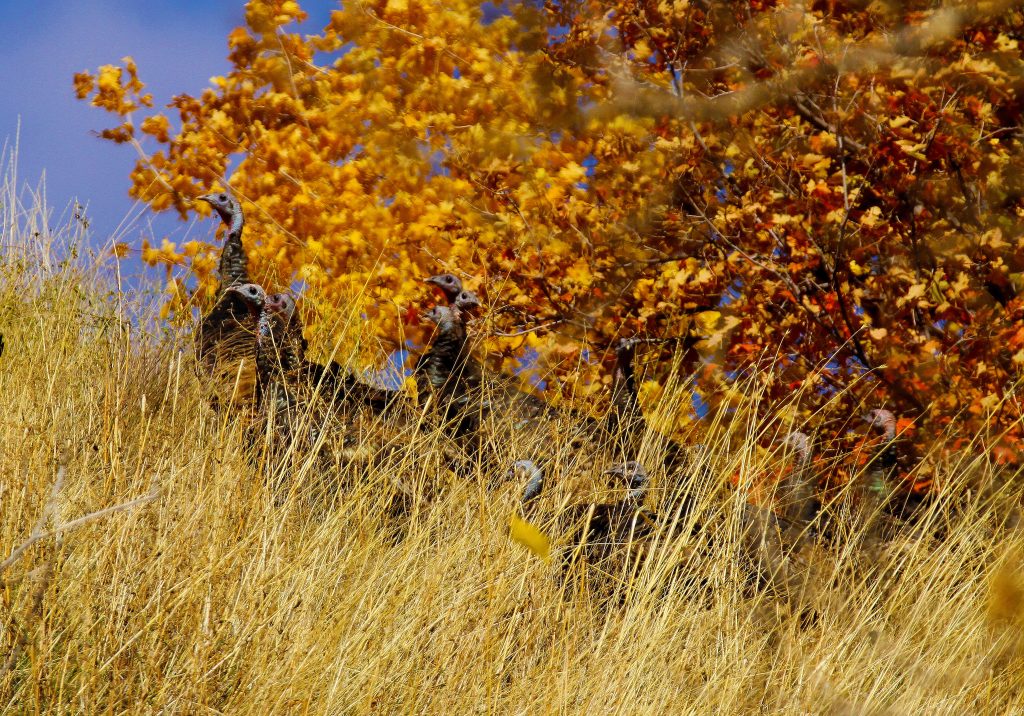

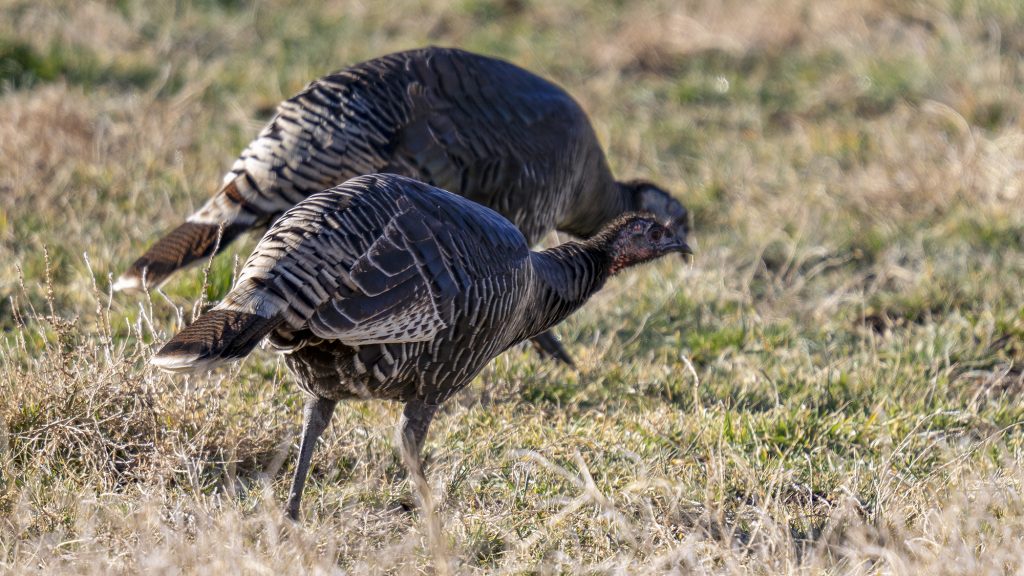








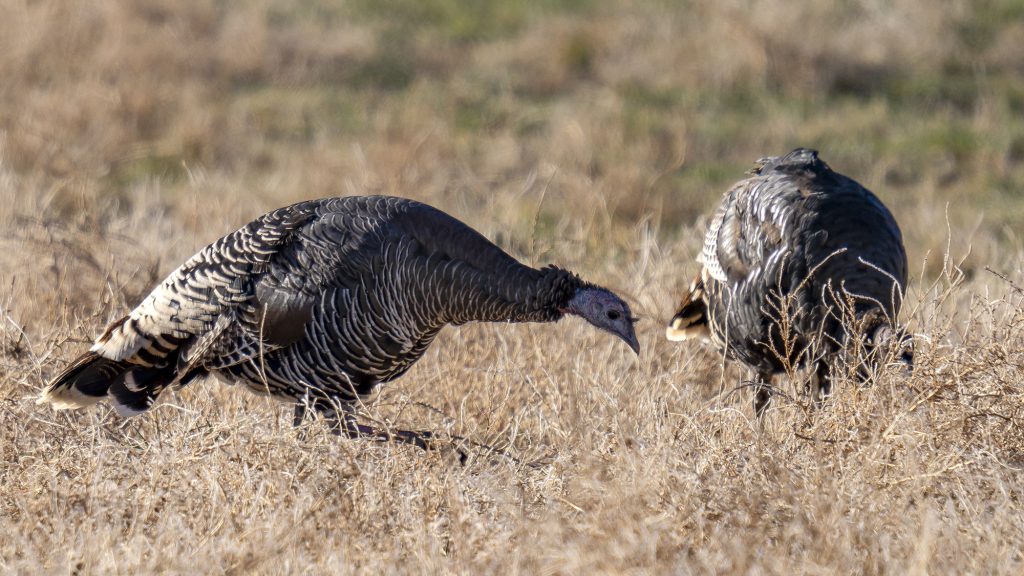
Copyright St. George News, SaintGeorgeUtah.com LLC, 2023, all rights reserved.
